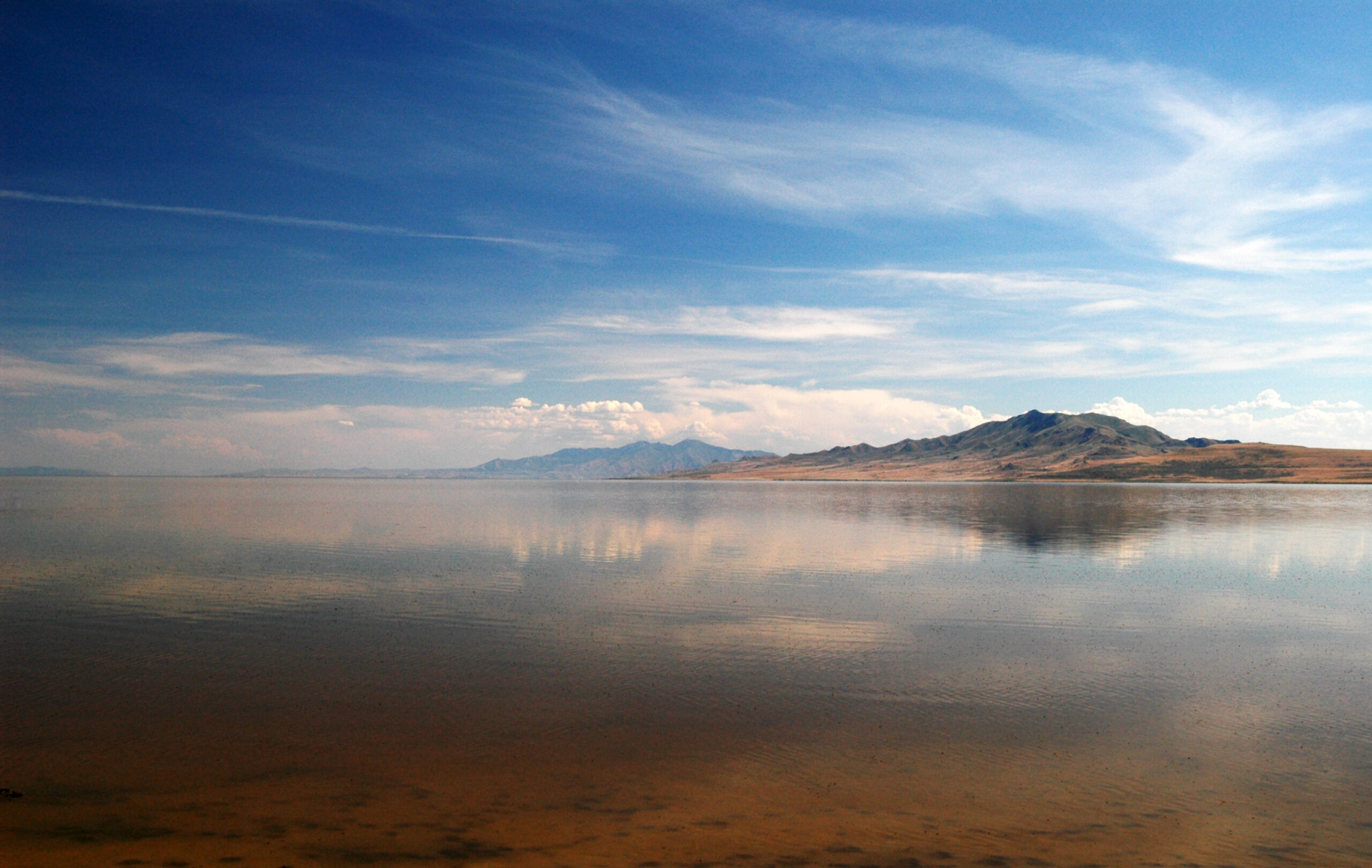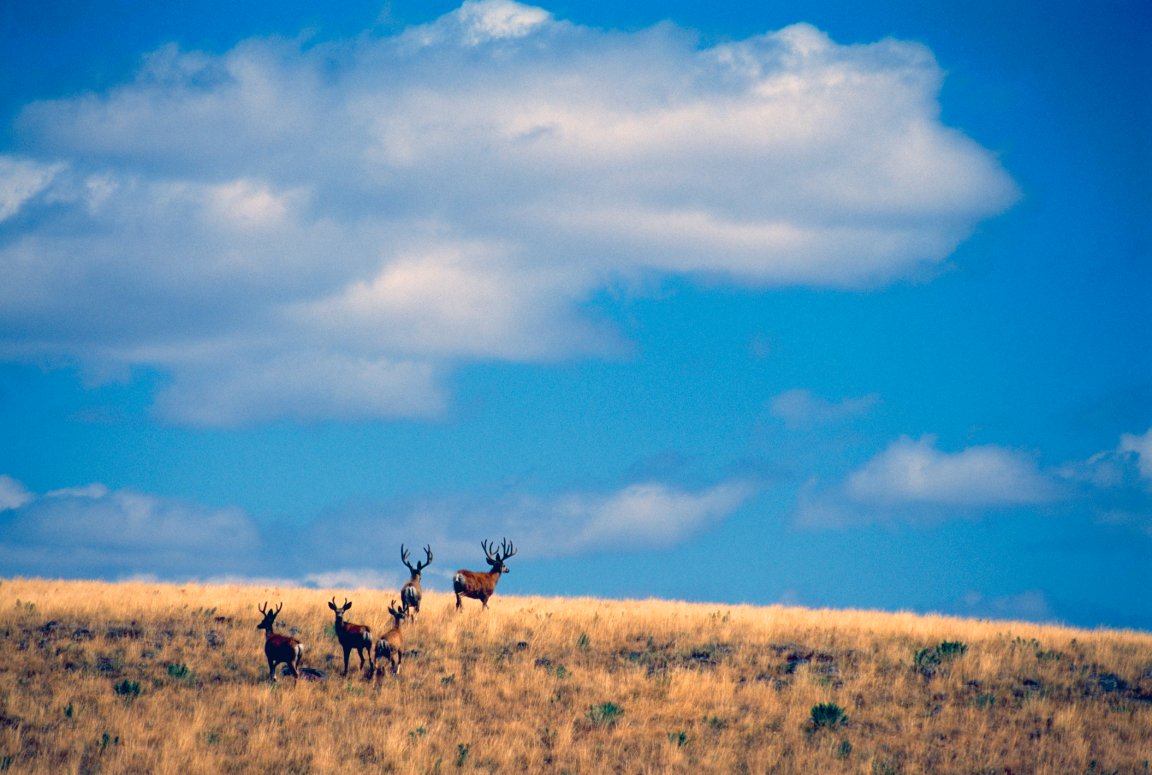The crowd in the ballroom of the Western Hunting & Conservation Expo exploded in cheers and astonished squeals as auctioneer John Bair thundered “SOLD!” on the final item of Friday’s auction. These attendees at the annual Salt Lake City auction had just witnessed a record. The chance to hunt a single mule deer buck this fall on Utah’s Antelope Island had just been sold for $500,000, which is $90,000 more than the previous record price, set in 2016.
The Expo crowd barely had a day to consider that a single deer hunt could cost a half-million dollars before that record was shattered the following night. In the final offering of Saturday’s auction, a Nevada man bought the Arizona Statewide Mule Deer Tag for $725,000, a sum that is as inconceivable as it is astonishing.
The buyer of the Antelope Island tag, according to Bair and confirmed by other sources, was Jimmy John Liautaud, the founder of the eponymous sandwich franchise. The buyer of the Arizona deer tag, which allows deer hunting for a full calendar year, was unknown to most Expo insiders.
Maybe it’s not important to know who’s shelling out this kind of money for this kind of opportunity. In some ways, our attraction to these stratospheric auction bids is our attraction to celebrity. We might not want to be fully in the limelight, but we want to be close enough to feel its heat and sense that we are participating in something larger than ourselves.
In the case of these auction tags, it’s easy to get pulled into the current of expectation by the auctioneer’s steady rhythm as he navigates successively higher bids. Whether you were in the Expo ballroom or not, if you hunt deer in the West, you are adjacent to the auction action, because these aren’t pieces of framed art or diamonds for sale. Public opportunities are being auctioned, and the deer tags that sell for these prices influence how we manage our public resources.
I’m not going to get all righteous and tell you that these tags shouldn’t be sold, or that they represent some dire direction for public-resource management. But even if the rest of us don’t pay these prices for our deer tags, we should pay attention to what’s happening in state legislatures and fish-and-game commission rooms and understand the mechanics of these high-visibility transactions.
As a Western hunter, and as a member of the board of the Mule Deer Foundation (MDF), which presents the Expo along with Sportsmen for Fish and Wildlife (SFW), these auction tags play an outsized role in funding opportunities the rest of us enjoy. Each of the record-setting tags is a little different, both in what the buyers purchased and how their funds will trickle down to those of us who wince when we pay 1/1,000th of what these high-rollers paid for their deer tags.
Antelope Island Tag

Utah’s Antelope Island hosts a class of bucks that most of us will never get to hunt. The 42-square-mile island in the Great Salt Lake is visible from the convention center where the Expo’s auction is held. It’s owned entirely by the State of Utah, which manages the land as a state park and the deer resource for older, trophy-class bucks.
The state issues only two tags for mule deer bucks on the island. One is distributed in the public lottery, and last year it was awarded to a Utah resident who had only six bonus points going into the draw. The auction tag is offered for sale at the Expo, and since 2011, the tag has raised over $3.5 million for Utah’s Division of Wildlife Resources, which receives 30 percent of the auction revenue to “improve habitat on the island and benefit mule deer translocations throughout the state,” according to the enabling legislation that authorizes the sale. The remaining 70 percent of the tag revenue is split. Ten percent stays with MDF and SFW to compensate the organizations for administering the Expo where the auction takes place. The remaining 60 percent must be used by the organizations for “eligible projects,” which include “habitat improvement and acquisition, transplants, targeted education efforts and other projects providing a substantial benefit to species of wildlife for which conservation permits are issued,” among other details.
In Utah, revenue from Antelope Island—along with the more than 200 other tags offered at auction—have funded thousands of GPS collars that biologist have strapped to mule deer and other big-game species in order to track their movements, better understand migration patterns, and ultimately influence management decisions that benefit wildlife populations and create additional hunting opportunity.
Arizona Mule Deer Tag
If Utah allows certain latitudes with 70 percent of the revenue raised by the Antelope Island deer tag, Arizona runs a much tighter ship. One hundred percent of the $725,000 raised at Saturday’s auction for the statewide deer tag goes to Arizona Game & Fish for “management and habitat projects that will benefit mule deer,” according to the Expo auction book.
Arizona actually offers two of these statewide deer tags, which can be used from Aug. 15, 2023 to Aug. 14, 2024. That’s right: It’s a year-long season, which means the recipient can hunt velvet bucks in the Kaibab or wintering bucks on Unit 12B, the legendary Arizona Strip. Presumably, hunters could also target bucks that haven’t yet fully developed their annual antlers.
“Maybe a June buck with beer-can bases,” says Jim Heffelfinger, wildlife science coordinator with Arizona Game & Fish and widely respected authority on mule deer management. “That would be a rare trophy. I bet nobody else with that [statewide] tag has one of those.”
Heffelfinger’s agency and wildlife program benefit grandly from special-tag revenue. Jackson Miller, habitat partnership coordinator for both MDF and Arizona Game and Fish, says the auction-tag revenue funded 47 habitat projects across the state last year to the tune of $3.2 million.
Many are landscape-level habitat improvements such as a 50,000-acre grassland restoration project in Unit 18A, water developments, and pinyon-juniper removal.
“Without the Habitat Partnership program, thousands of acres of habitat would not receive the treatment they need every year,” Miller says. “It truly changes the landscape.”
Auction Tags vs. General Tags
Given the eye-popping prices—and outsized attention—that these auction tags receive, it’s worth asking: How does that revenue compare with general-tag sales to hunters who can’t afford a new pickup, let alone a six-figure deer tag?
States’ revenue reporting systems are so different that it’s hard to quantify revenue, but in 2019 alone, Colorado sold nearly $100 million in hunting licenses. Revenue generated from those deer, elk, turkey, and moose tags paid for the salaries of wildlife biologists and hatchery technicians, for paper, power, and light at regional offices, and for the computer systems that enable these tags, used to manage public wildlife resources, to be distributed quickly and equitably.
That’s an important consideration for states as they wonder if they should put more of the public’s resources up for sale on the auction block, or simply keep distributing public tags to public hunters.
As they’re considering that choice, policy-makers would be wise to calculate the indirect financial impact that public hunters can have on rural communities. Nevada estimates that hunters spent about $380 million in 2020 on hunting and hunting related expenditures in addition to their licenses.
“More people want to hunt big-game animals here in Nevada than there are available big-game hunting tags,” said Michael Taylor, a co-author of the report. “That’s what makes hunting kind of a recession-proof industry. There are so many people who want to go that demand stays strong even during an economic downturn.”
An economic downturn that doesn’t seem to have affected the purchasing power of at least some Expo auction bidders.
